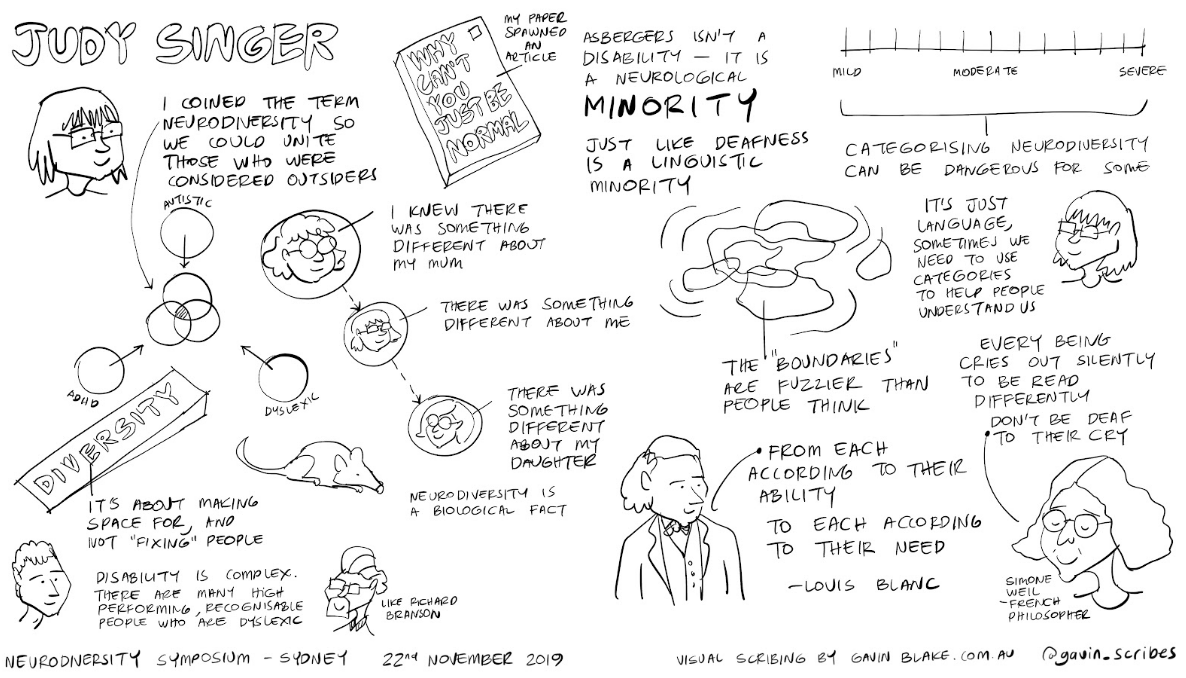The Origins and Evolution of Neurodiversity

Alison Eveleigh | 09/12/2019
Judy coined the term ‘Neurodiversity’ in 1997. Read more from her conversation with Rachel Worsley.
Sydney Neurodiversity Symposium 2019 Presentation Summary: Judy Singer
As part of the Thriving Now Sydney Neurodiversity Symposium 2019, held at Fishburners Sydney and hosted by Thriving Now director Jay Hobbs, Judy Singer spoke about the origins of the term ‘Neurodiversity’ and how this has sparked social change.
Takeaway: It is hard to explain your differences when you don’t have the language to articulate your feelings. This is why the term neurodiversity is so important – it has branded a social movement that has led to wider social acceptance and accommodation of people with autism, ADHD and dyslexia.
The Origins of Neurodiversity
- Judy coined the term ‘Neurodiversity’ in 1997 when she was writing her thesis about online support groups for people on the autism spectrum. She wanted to create a movement for all people who were made to feel like outsiders (e.g those with autism, ADHD and dyslexia).
- Judy’s interest in the area was driven by her family history. She recognised that there was something different about her mother, and that this condition was hereditary. She saw it in herself and her daughter. It was only through her own personal research that Judy recognised that she, her mother and her daughter were all on the autism spectrum.
- Judy believes in the social model of disability, which says that a disability is not about what is wrong with the individual, but how society responds. Judy developed her own ethnic model of disability in respect of Asperger’s syndrome. In her view, people with Asperger’s are not disabled but are a neurological minority.
- The phrase ‘neurodiversity’ is important, as it does not classify or rank people, nor is it a synonym for ‘Neurological Disorder’. Instead, Judy notes it is an indisputable property of our plant and legitimises the neurodiversity Movement, a discussion across the media about neurodiversity. The movement has evolved over time, growing from only autism to include ADHD and dyslexia. It has sent a message that society needs to accommodate rather than fix neurodivergent individuals.
- As with all social movements, there are controversies and opponents. There has been particular disagreement around the classification of people on the autism spectrum (e.g. moderate, mild, severe). This has led to intense debate and hashtags such as #actuallyautistic. The movement is evolving to take on these criticisms over time.
- The long-term goal of the neurodiversity movement is to change society’s perceptions of neurodivergent people and facilitate inclusion.
Check out the sketchnote below for a visual summary of Judy Singer's talk.
